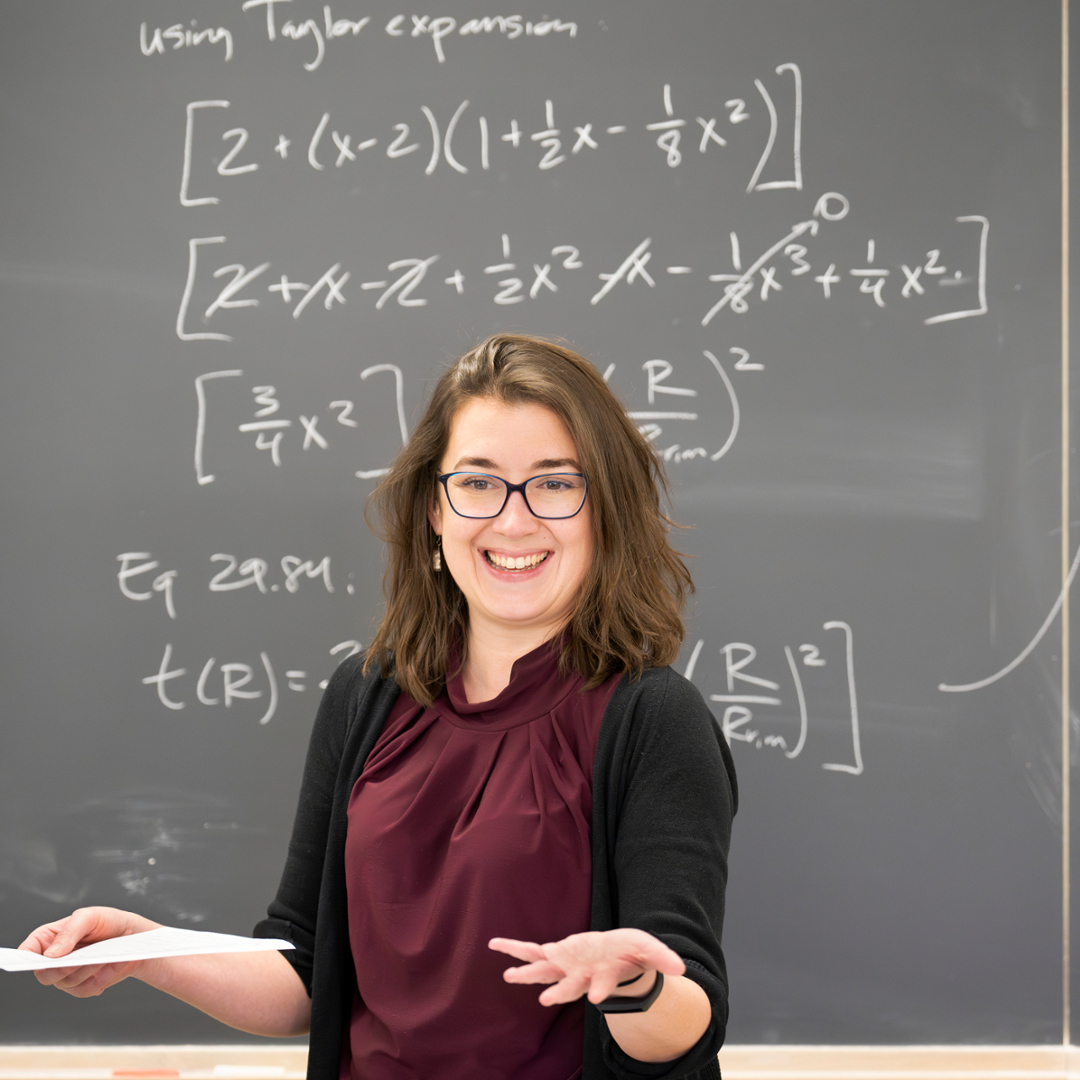When someone thinks of astrophysics, art usually doesn’t cross their mind. This is no longer the case for students in the Extragalactic Astronomy and Cosmology or Rogue Objects: Creative Research and Art-Astrophysics Practice Block 7 classes.
The Block Plan, which allows for extended periods of experiential learning, was instrumental in allowing Natalie Gosnell ’08, assistant professor of physics, to hold collaborative class sessions with Janani Balasubramanian, visiting instructor of theater and dance.
“In these classes, astrophysics and art students came together to explore the interdisciplinary space of art-science and how thinking beyond disciplinary boundaries can inform their understanding of the course material,” says Gosnell, who graduated from CC with a degree in physics.
There were three convergence classes where students from different courses worked together on a shared reading or collaborative activity. “The convergence class moments, which were unique to this specific offering, were only possible on the Block Plan,” says Gosnell. “Our longer class sessions also allowed for more interconnectivity between the course material and recent scientific papers. This means we’re able to explore the topics we do cover in more depth.” Gosnell adds that she and Balasubramanian have been collaborating on art-science questions for the past five years.
Gosnell and Balasubramanian are co-creators of “The Gift”, which is an immersive installation that combines art and astrophysics. “The Gift” is available to view at the Fine Arts Center through June 18, 2023.
“Through our convergence classes we hoped our students would better understand the deep link between science and art. For my students in particular, I hope they explored the deep humanity that serves as the foundation of all science. Science is done by people and is therefore informed by our histories, traditions, and practices,” says Gosnell.
Students definitely absorbed the interconnectivity of the topics and appreciated the new light it brought to their own course of study.
“I thought the convergence class was incredibly beneficial, not only providing a reprieve from the usual class schedule but also as a means to discuss what we're learning with non-STEM students who were learning about similar topics in different contexts,” says Michael Braithwaite ’24, who was in Gosnell’s class. “Many of the issues with science in our modern-day sphere come from an immense disconnect between scientists and non-scientists due to a lack of communication and dissemination of sometimes complex scientific topics. These classes were a great way not only for us to work with students who may have less of a scientific background, but also to discuss ways to improve this communication and allow more people to better understand what forces are at work in our universe.”
In the first convergence class, students discussed the idea of darkness from the perspectives of science and art as well as a feminist and gender studies perspective. In the second combined class, Balasubramanian’s students presented the artwork they made that week and Gosnell’s students taught the art class about Sagittarius A*, the black hole at the center of the galaxy.
“In STEM disciplines, very often you are meant to ask questions but also accept whatever content or ideas you are learning,” says Patrick Loos ’25, a physics major who was in the physics class. “By having the convergence classes, we got to raise questions and have discussions challenging the status quo. These convergence classes were very beneficial because I have always taken and assumed science to be true. Now I know to challenge what I learn.”
“This convergence opened my mind to new ideas and possibilities,” says Mackenzie Boyd ’24, who was in the art class. “For me this experience emphasized the importance of interdisciplinarity, and how impactful different people’s backgrounds and perspectives can be.”
Boyd enjoyed all three of the convergence meetings, but especially liked the last session, where students from both courses read the same four chapters prior to meeting, and then had a collaborative discussion, which highlighted the diverse perspectives students from the different classes brought to the discussion.
“I found all of the convergences to be beneficial, but especially this last one led to some amazing discussions,” says Boyd.



